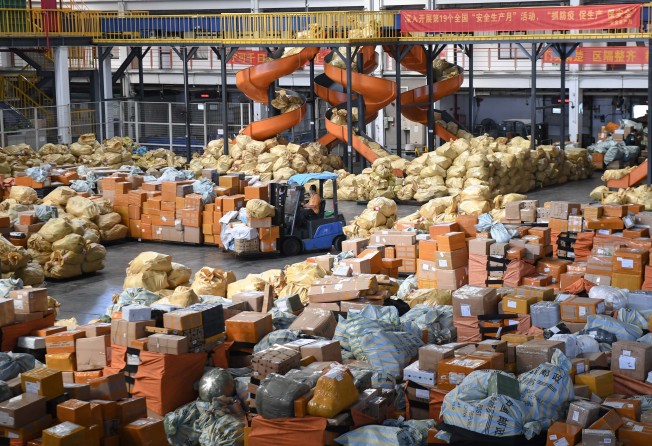China GDP: two-thirds of provinces beat national growth figure in 2020
- Tibet and Guizhou top the chart, as southern powerhouse Guangdong matches national figure of 2.3 per cent, pushing its gross domestic product (GDP) past US$1.7 trillion
- Beijing has yet to set a growth target for 2021 after ending a decades-long tradition in not doing so last year

Almost two-thirds of China’s provinces reported faster economic growth for 2020 than the country achieved as a whole, according to official figures released since the start of the year.
Of the 31 jurisdictions, 20 saw gross domestic product (GDP) growth of more than 2.3 per cent for the year, with Tibet and Guizhou topping the chart with 7.8 and 4.5 per cent, respectively.
Guangdong province, an economic powerhouse in southern China, matched the national figure, as its gross domestic product rose beyond 11 trillion yuan (US$1.7 trillion), mostly on the back of a steep rise in fixed-asset investment.
The province’s retail sales fell by 6.4 per cent year on year, while total trade dropped by 0.9 per cent.
Hubei, which was the epicentre of the initial coronavirus outbreak in China, was the only province to see its economy contract in 2020, sliding 5 per cent. Much of the damage was done in the first quarter of the year when GDP fell by 40 per cent, mostly as a result of the province being forced into lockdown for three months from late January.
Because of the low base in 2020, analysts say China’s economy could grow by more than 8 per cent this year. However, many provinces are setting less ambitious, if still confident, targets due to the uncertainties in the external environment.
Bucking that trend are Hainan – which reported economic growth of 3.5 per cent in 2020 and is set to become China’s largest free-trade port – and Hubei, both of which have set targets of more than 10 per cent for the year ahead.
Hubei governor Wang Xiaodong even went so far as to say that 10 per cent was at “the bottom end” of the province’s growth forecast.
In 2020, authorities in Beijing broke with decades of tradition by not setting a national GDP growth target. Many analysts say the central government is likely to repeat that approach in 2021, but Larry Hu, chief China economist at Macquarie Group, disagrees.
“Top leaders still want the economy to double from 2020 to 2035, and that requires an average annual growth rate of 4.7 per cent,” he said, adding that a target of more than 6 per cent was likely for 2021.
“China’s economic system is best described as state capitalism, and the state part needs planning,” he said. “Without a target, it will lose its anchor and not be able to function appropriately.”
Earlier this month, Ma Jun, a member of the People’s Bank of China’s monetary policy committee, said Beijing should permanently abandon setting growth targets as doing so put too much pressure on regional governments.
Strict goals often led to provincial authorities overborrowing, and inflated growth targets set against a low base were misleading to investors, he said.
Beijing should instead make stabilising employment and controlling inflation its main macroeconomic policy goals, as most leading nations did, Ma said.